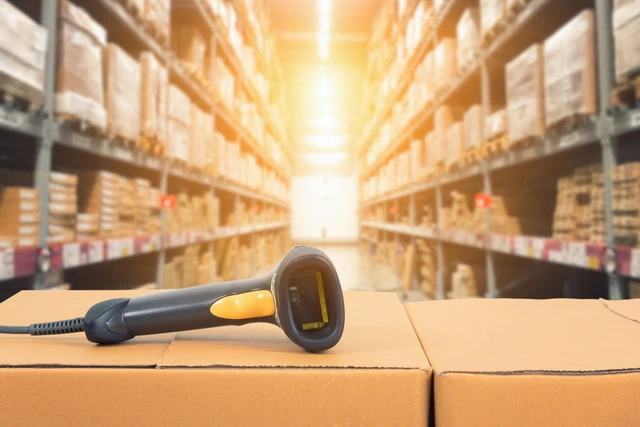Industrial Asset Tracking: 4 Tips and Best Practices


How do you find cost efficiencies in your business? What’s the best way to maximize asset utilization? How can you improve asset maintenance, asset management, and asset oversight? While there are several ways to address each of these questions, there’s only one solution that can be used with equal success for all of them: industrial asset tracking.
On the one hand, this practice is exactly what it sounds like: monitoring assets to know where they are, where they’ve been, and where they’re going. However, on the other hand, equipment tracking strategies can encompass everything from real-time maintenance and inspection updates to extensive operational data collection.
The breadth of metrics that can be monitored and quantified – and the amount of actionable, money-saving strategies that you’ll brainstorm as a result – has made asset tracking one of the most powerful tools in a plant operator’s arsenal.
Think of it like a key that can unlock newfound levels of productivity and efficiency – all without the need for major facility, hardware, or software upgrades.
We’ve compiled the following asset tracking tips and best practices to shed light on just how impactful this practice can be when effectively integrated into your business. Whether you’re just getting started with digital asset monitoring or simply looking to refine your processes, consider this list a great place to start.

It’s important to remember that asset tracking is just one of the many operations needed to keep your business moving, no different than conducting payroll audits, performing inventory control, or automating quality control inspections.
When implementing a tracking system or upgrading an existing one, you want it to play well with established tools and processes. The more compatible your analytical tools are, the more interconnected your digital ecosystem becomes, resulting in higher-quality data and other benefits.
A great solution that enables this wide-lens approach is Enterprise Asset Management software. Often abbreviated as EAM, this all-in-one program considers an asset’s entire lifecycle from acquisition to depreciation to deposition.
Because it pulls in so much data, it can capture a much better picture of your assets, allowing you to make more informed decisions about usage, service, repair, and replacement.
EAM is just one example of a software that goes beyond basic tracking needs to deliver a more robust solution.
Depending on your business, you could also consider ERP solutions, fleet management systems, or inventory tracking software. The bottom line: think holistically when choosing what’s right for you, so that you can get the best asset tracking software for your needs.
While it’s easy to focus on the digital side of asset tracking, the process really begins with the assets themselves. And what ties your equipment to your chosen management software? Asset tags and labels.
Today’s most advanced labels incorporate high-grade manufacturing processes with leading QR, RFID, and barcode technologies for quick and effortless location tracking, maintenance reporting, incident logging, and other relevant events that you want to keep a record of.
By simply scanning its tag, a field tech or equipment operator can update in real time an asset’s digital maintenance record or inspection history, dramatically improving reporting speed and accuracy compared to traditional alternatives.
Check out the video below to learn more about using QR codes for asset tracking.
But industrial settings are often merciless, and can often result in barcodes fading or tags peeling, tearing or rusting. This is why you need a quality asset tag like the Metalphoto® Anodized Aluminum tags.
These have been specifically designed to withstand harsh environments like those found at mineral extraction sites, remote military bases and other demanding outdoor operations. In fact, it’s proven so successful that it’s been used for over 50 years by the US Armed Forces, NASA, Caterpillar and other organizations demanding nothing less than the absolute best.
Using the right asset tag is key to a successful asset tracking strategy. Metalphoto® solutions are just one option; Camcode offers several other asset tag materials that might also be appropriate for your use case.
Whether you run a coal mine or car factory, consider how and where your equipment is typically used and buy the asset tag best suited for those conditions.
Successful implementation of any program in a work setting requires the buy-in of employees from across the organization; that’s especially true if you want to track your assets as effectively as possible. Your team not only needs to know what to do, but also why it’s important in the first place.
Conducting effective training programs early on can lay a groundwork of understanding, but it’s also important not tp lose focus of this educational aspect, even once the system has been established.
Continued education efforts will help communicate new program updates, ensure long-term understanding of strategic initiatives, and introduce new employees to your firm’s asset tracking SOPs.
Luckily, many aspects of tracking assets are straightforward when broken down to the key digestible steps that are most important for fieldworkers to know. Communicate that early and often and you’ll help ensure your strategy remains successful.

Don’t let your progress slip over time – stay vigilant to pain points in your processes by conducting routine asset tracking audits. Regular reviews like these – especially after asset tracking has first been established – is the best way to see both where the system is succeeding and where there is opportunity to refine and rehash.
Regular audits also help reinforce a culture of continuous improvement. After all, like anything else in business, asset tracking isn’t a set-it-and-forget-it kind of system – you want to stay abreast of relevant new software, technologies, and strategies.
Audit results can often be the impetus to conduct more research into the latest solutions and advancements, potentially leading to system upgrades that will save your company time and money in the long run.
These tips all have one thing in common: they aim to help you get the most out of your asset tracking strategies and processes. We encourage you to follow our suggestions, optimize for the best asset tags and software on the market, and get ready to see some great results.

Industrial asset tracking enhances efficiency and productivity by providing real-time visibility into asset locations and usage. This leads to optimized workflows, reduced downtime, and improved resource allocation, ultimately boosting operational efficiency.
Common technologies for industrial asset tracking include RFID, GPS, barcodes, and IoT devices. RFID enables wireless communication, GPS provides location data, barcodes offer cost-effective identification, and IoT devices enable real-time monitoring. The choice depends on specific use cases and industry requirements.
Industrial asset tracking data is secured through encryption, robust access controls, and authentication mechanisms. Adherence to industry regulations ensures data confidentiality, protecting against unauthorized access and maintaining the integrity of valuable asset tracking information.
Our sales engineers are experts in automatic asset tracking, tagging and identification,a nd can answer all your questions. Get in touch now.
Lets Talk ›Enter your information and get a free checklist of the top questions to answer and tips to plan a successful asset tagging project for any asset management or tracking system implementation.